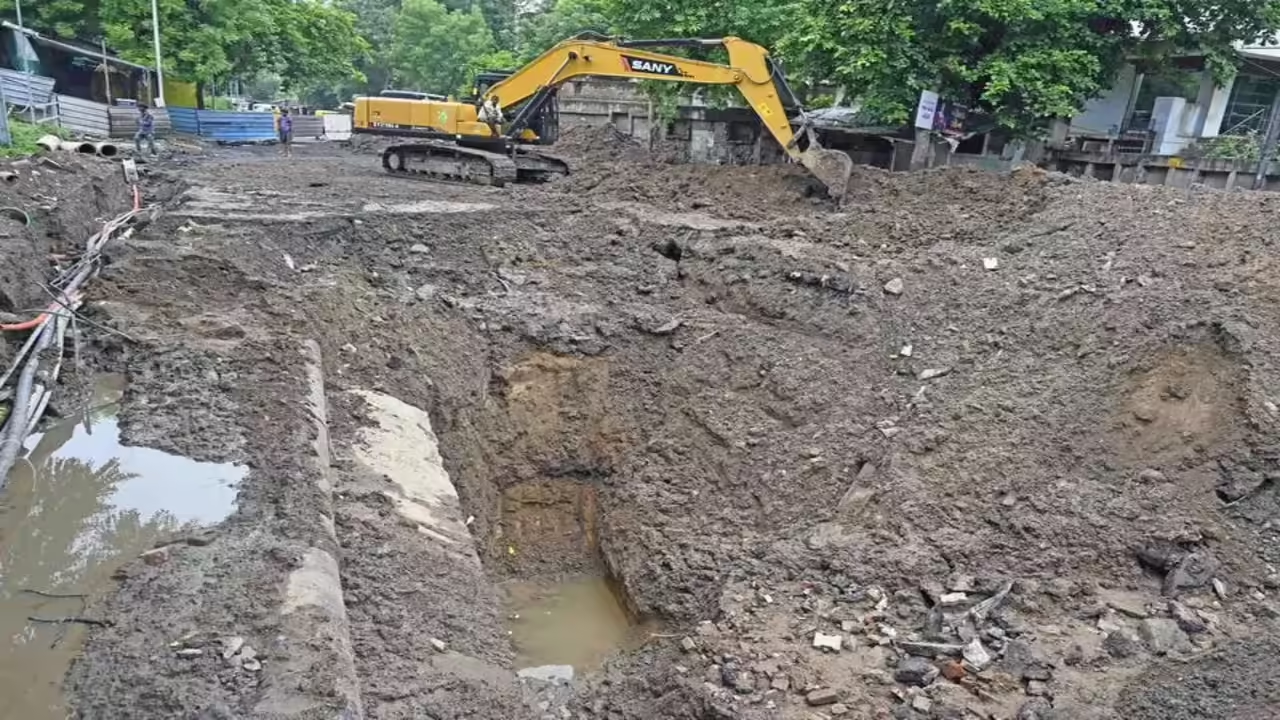Gujarat’s extensive road network, the very arteries of its economic and social life, has sustained significant damage following intense monsoon downpours, prompting an urgent directive for comprehensive repair and restoration. The immediate focus is on ensuring swift rehabilitation of these vital links, which are indispensable for daily civilian life and the state’s developmental trajectory. This incident underscores a critical imperative for urban planning: the need to construct and maintain infrastructure that is not only robust but also inherently resilient to the escalating impacts of climate change, thereby fostering genuinely sustainable and equitable urban environments.
In a high-level review meeting held in Gandhinagar, senior officials from various departments were instructed to commence road repair work immediately, without awaiting a cessation of the rains. This proactive stance reflects the understanding that delays can exacerbate disruptions, impacting livelihoods and access to essential services. The directive specifically emphasised accountability for contractors, particularly when damage occurs within the defect liability period, reinforcing the importance of quality in public works. The commitment to maintaining high standards, even under challenging weather conditions, is paramount for building infrastructure that serves the long-term interests of all citizens.
The comprehensive assessment covered all categories of roads, including National Highways, State Highways, and those under Panchayat administration, underscoring the pervasive nature of the damage. The state’s road network is rightly termed the “backbone of development,” facilitating commerce, agriculture, and daily commutes. Disruptions to this network disproportionately affect vulnerable populations, including daily wage earners, small businesses, and those residing in remote areas, hindering their access to markets, healthcare, and educational opportunities. Therefore, the swift restoration of these critical links is not merely an economic necessity but a social imperative, directly contributing to urban equity.
The directive to utilise every available moment, including holidays, to expedite repair work highlights the urgency of the situation. This operational intensity is crucial for minimising the period of inconvenience for commuters and ensuring the continuous flow of goods and services. Furthermore, the emphasis on immediate, on-the-spot repairs by field engineers underscores a decentralised and responsive approach to crisis management. This agility is vital in a dynamic environment where weather patterns can shift rapidly, demanding quick adaptation and effective resource deployment to mitigate widespread disruption.
Beyond immediate repairs, the state’s leadership has called for long-term planning to prevent the recurrence of such widespread issues. This forward-looking approach is fundamental to building truly sustainable cities. It necessitates a re-evaluation of existing construction methodologies, materials, and drainage systems to ensure they can withstand increasingly severe weather events. Investing in climate-resilient infrastructure, such as permeable road surfaces, improved stormwater management systems, and durable construction materials, will not only reduce future repair costs but also minimise the environmental footprint associated with repeated reconstruction efforts, aligning with zero net carbon objectives.
Seamless coordination among various agencies, including the National Highways Authority of India, the Road Construction Department, Panchayats, and Municipal Corporations, has been identified as a critical factor for success. This inter-agency collaboration is essential for a unified response to infrastructure challenges that often span administrative boundaries. For instance, while 83 kilometres of National Highway were damaged during this monsoon season, repair work has already been completed on 58 kilometres, with the remaining 25 kilometres expected to be restored swiftly. This progress demonstrates the effectiveness of coordinated efforts in addressing large-scale infrastructure issues.
The ongoing major repair and structural work on approximately 243 bridges across the state further illustrate the scale of the infrastructure challenge and the commitment to addressing it. While diversions are being managed and continuously monitored to ensure traffic flow, these projects highlight the need for a holistic approach to infrastructure maintenance and development. Ensuring the structural integrity of bridges is paramount for safety and for maintaining uninterrupted connectivity, which is vital for both economic activity and the daily lives of citizens.
Ultimately, the state’s proactive response to monsoon-induced road damage is a testament to its commitment to public welfare and sustainable development. By prioritising swift restoration, demanding accountability, and advocating for long-term climate resilience, the administration aims to not only alleviate immediate commuter distress but also to fortify Gujarat’s urban and rural infrastructure against future environmental challenges. This strategic vision is essential for fostering cities that are not only economically vibrant but also environmentally responsible and truly equitable for all their inhabitants.
Also Read :Nagpur Prepares To Launch Six-Lane Work On Bhandara Highway Within Three To Four Months




